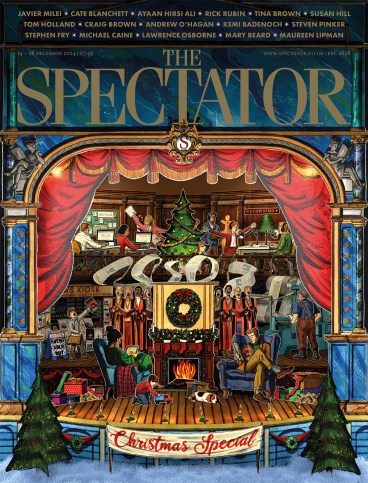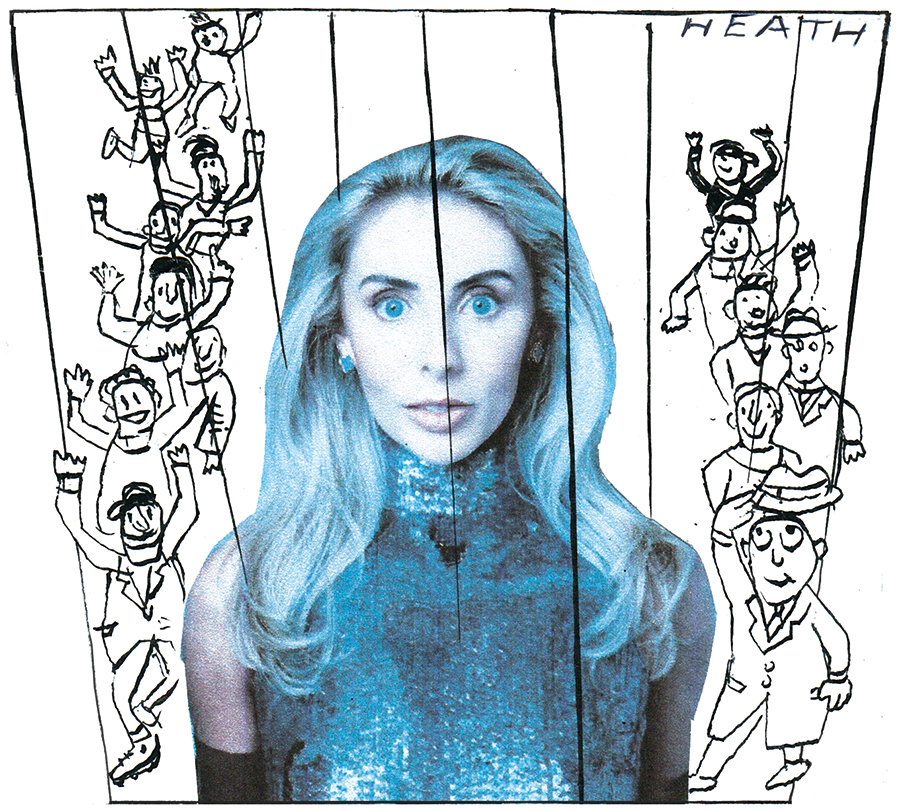
More than a thousand musicians took part when Handel’s Messiah was performed in Westminster Abbey in May 1791. It wasn’t the only item on the bill, either; it was part of a day-long blow-out that lasted from 11 a.m. to 5 p.m. and also included the whole of Handel’s Israel in Egypt. The crowd came prepared. According to Adalbert Gyrowetz, a Bohemian composer then living in London, the audience munched on ‘hard-boiled eggs, ham and roast meat’ during the intervals. ‘One had almost to wade through a mass of eggshells and other rubbish on the way out of the church,’ he noted.
Romaniw was everything you’d want in a Tosca: proud, impulsive, fearsome and vulnerable
Things were a bit more demure when the Academy of Ancient Music and Westminster Abbey’s own choir performed Messiah in the Abbey the week before Advent. I didn’t see any impromptu picnics, I’m sad to say; and of course, no one these days expects Messiah to be done with Mahler 8 forces. An orchestra of 21 players was conducted by the Abbey’s organist Andrew Nethsingha, and the choir numbered 37, including 25 boy trebles whose utterly distinctive tone quality gave the overall sound a wonderful luminescence – a halo, you might say.
In short, it was what we’ve come to call an ‘authentic’ sized performance, although we shouldn’t, because there’s no such thing. Or at least, there’s no one such thing. Whenever Handel directed Messiah in his own lifetime, he adapted it to the musicians and venue at hand, and for more than two centuries it was generally accepted that the best way to honour Handel’s intentions was to go large. Within living memory Messiah typically meant something like the version that, on 19 ”78s in a stout cardboard box, was the pride and glory of my grandfather’s record collection: Malcolm Sargent conducting the Royal Liverpool Philharmonic and the Huddersfield Choral Society, with nourishing vibrato and a resplendent fullness of sound.
If we do things differently now, it’s largely down to the AAM, whose pioneering period-instrument recording under its founder Christopher Hogwood – released as recently as 1980 – is the reason why symphony orchestras with 60-piece string sections now send half their players home, despised and rejected, whenever Messiah season comes around. Hogwood modelled his recording on Handel’s own performance in the Foundling Hospital Chapel – a much smaller space. Would Handel have expected more performers for Westminster Abbey? Very probably, but you’d need a hotline to the hereafter to know for sure. What matters is how it sounds, and whether it speaks.
On that front, Nethsingha and his team succeeded nobly. They were positioned in front of the rood screen and the Abbey acoustic allowed the choral and orchestral articulation to sound as vivid back by the West Door (or so my sources tell me) as they were four rows away from the orchestra. Nethsingha went for buoyancy rather than speed records, and ‘Hallelujah’ was positively lyrical, with the AAM’s valveless trumpets burning through the texture.
But with three male soloists drawn from the Abbey choir itself, as well as the soprano Anna Dennis, the most striking thing about this Messiah – a vindication of the historically informed approach – was the range of colour, both instrumental and vocal. It was marvellously dramatic. Dennis’s voice rolled and rang as she swept into her opening narration while the countertenor Tristram Cooke (who had stepped up from the choir at short notice after the original soloist withdrew) sang in measured phrases with a pure, silvery tone. The ‘Pastoral Symphony’ lilted and lifted, and violin passagework filled the skies above Bethlehem with pinpoints of whirling starlight. Authentic or not, it was captivating: childlike wonder delivered with remarkable sophistication.
Stars also pierce the sky in the final act of Jonathan Kent’s production of Tosca, which was revived at the Royal Opera in all its sumptuous, shadowy grandeur. Worth seeing? Put it this way: Kent’s staging dates from 2006 and it can only be a matter of time before it’s replaced by something drab, with plastic chairs. For now, though, the cast included SeokJong Baek as a high-octane (vocally, at least) Cavaradossi, Bryn Terfel as Scarpia, and Natalya Romaniw, who stepped in after Sonya Yoncheva withdrew, and gave something close to a career-best performance as Floria Tosca.
Terfel was compulsively watchable, harnessing the stentorian side of his voice to portray a hollow, lurching brute with a face twisted by his own corruption. Romaniw was everything you’d want in a Tosca: proud, impulsive, fearsome in her rage and piteously vulnerable in her tenderness. She had dignity, maintaining a wounded poise even while passion welled up at the core of that sweet, hot voice before spilling out to make the entire theatre quiver. Her murderous ‘kiss’ was both shocking and plausible. We already knew that Romaniw was something special, but this was on another level.








Comments